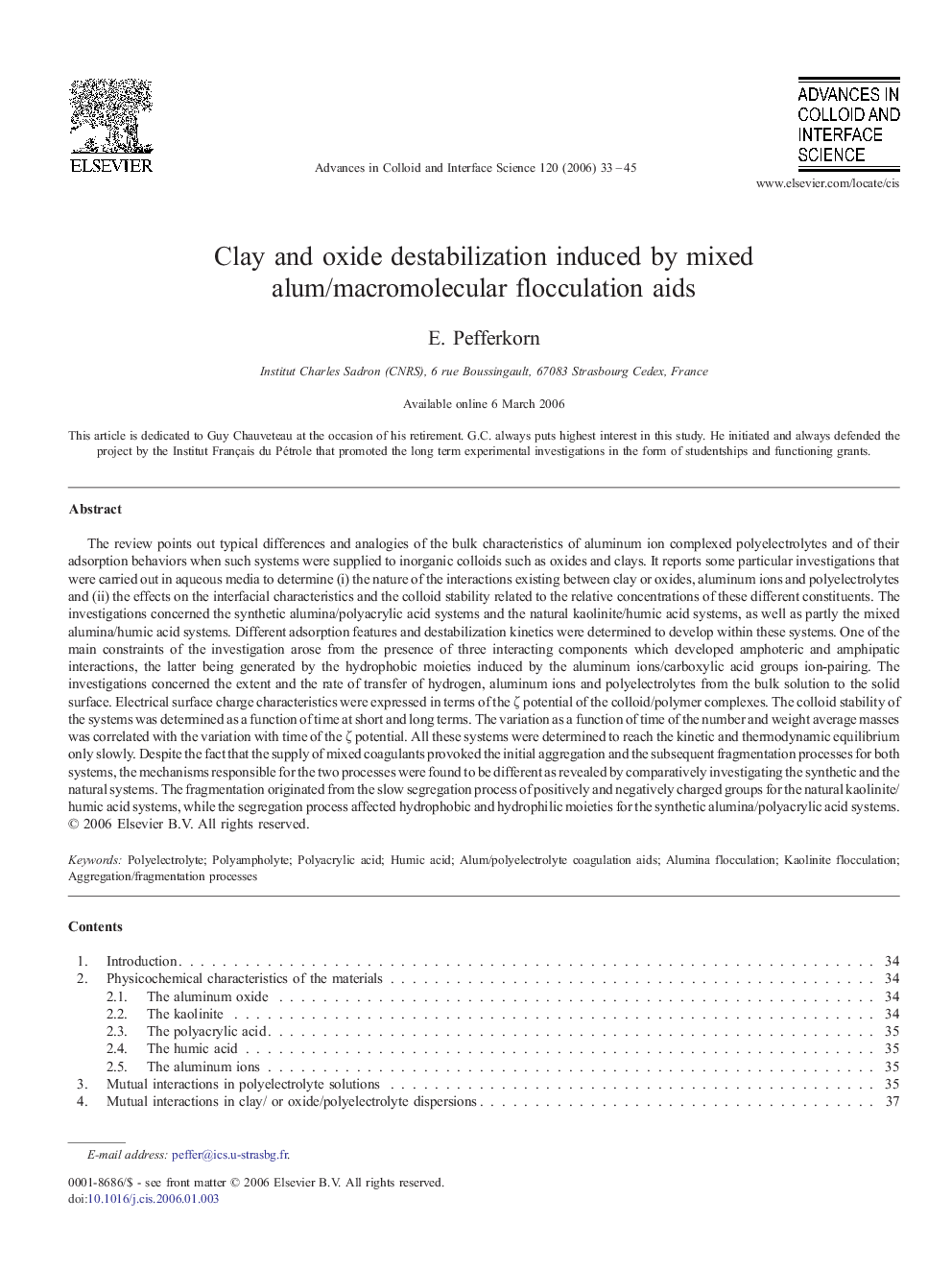| کد مقاله | کد نشریه | سال انتشار | مقاله انگلیسی | نسخه تمام متن |
|---|---|---|---|---|
| 591288 | 1453612 | 2006 | 13 صفحه PDF | دانلود رایگان |

The review points out typical differences and analogies of the bulk characteristics of aluminum ion complexed polyelectrolytes and of their adsorption behaviors when such systems were supplied to inorganic colloids such as oxides and clays. It reports some particular investigations that were carried out in aqueous media to determine (i) the nature of the interactions existing between clay or oxides, aluminum ions and polyelectrolytes and (ii) the effects on the interfacial characteristics and the colloid stability related to the relative concentrations of these different constituents. The investigations concerned the synthetic alumina/polyacrylic acid systems and the natural kaolinite/humic acid systems, as well as partly the mixed alumina/humic acid systems. Different adsorption features and destabilization kinetics were determined to develop within these systems. One of the main constraints of the investigation arose from the presence of three interacting components which developed amphoteric and amphipatic interactions, the latter being generated by the hydrophobic moieties induced by the aluminum ions/carboxylic acid groups ion-pairing. The investigations concerned the extent and the rate of transfer of hydrogen, aluminum ions and polyelectrolytes from the bulk solution to the solid surface. Electrical surface charge characteristics were expressed in terms of the ζ potential of the colloid/polymer complexes. The colloid stability of the systems was determined as a function of time at short and long terms. The variation as a function of time of the number and weight average masses was correlated with the variation with time of the ζ potential. All these systems were determined to reach the kinetic and thermodynamic equilibrium only slowly. Despite the fact that the supply of mixed coagulants provoked the initial aggregation and the subsequent fragmentation processes for both systems, the mechanisms responsible for the two processes were found to be different as revealed by comparatively investigating the synthetic and the natural systems. The fragmentation originated from the slow segregation process of positively and negatively charged groups for the natural kaolinite/humic acid systems, while the segregation process affected hydrophobic and hydrophilic moieties for the synthetic alumina/polyacrylic acid systems.
Journal: Advances in Colloid and Interface Science - Volume 120, Issues 1–3, 30 June 2006, Pages 33–45